Typical foods Argentine result of a synthesis of European dishes tasty food combined own native soil.
The Asado.Argentina's cuisine is the result of a tasty sum, product contribution of European dishes belonging to different migration flows, seasoned and mixed with food own native soil.
The characteristic infusion is the mate-shared with South American neighbors, preferably "green" or "Spook" (bitter), with its variants: sweet, cooked milk and "tereré". Traditional drinks, meanwhile, are wine patero, the hosts and chicha (the latter in the Northwest provinces).
The barbecue cooking is a technique in which food (generally beef cuts) are exposed to heat from fire or embers in order to cook slowly. It is often preferred as a source of heat the coals of a wood fire. Heat is transferred gradually to food, which is usually suspended on or near hot coals. The coals are obtained from charcoal or direct burning of wood.
The choripán.Fried cakes.
If you travel to the La Boca neighborhood choripán will be waiting at the corner. A juicy sausage in a peasant bread that can be eaten with chimichurri sauce.
Is generally prepared with French bread and grilled sausage. The sausage is called "Creole sausage," or barbecue, typical River Plate area, and that, unlike other areas, is done without drying or smoked, being used almost fresh. Usually seasoned with a sauce like chimichurri (Argentinean typical dressing made with parsley, pepper and oregano) or pebre. His popularity reaches to include it among one of the top ten favorite dishes from Argentina. Their preparation has been disclosed to other Latin American cuisines such as Bolivia, Colombia, Paraguay, Peru and Cuba.
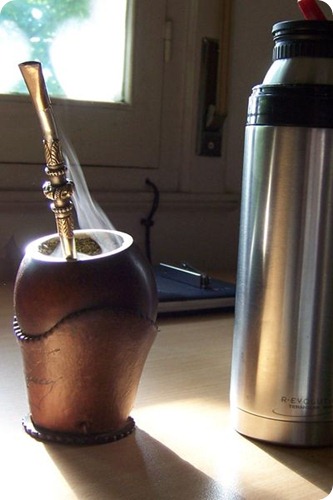
Mate. Mate is always present on the table of the Argentines. Whether at breakfast, after dinner or snacks, many of these meals are accompanied by this infusion. There are exquisite dishes and they have been left out, but the mate could not miss.
So did other groups who did trade with the Guarani, as querandíes, the ancient pampas, tuffs, etc..). It was quickly adopted by the Spanish colonists, and was part of the cultural heritage in Argentina, Paraguay and Uruguay, countries that consume mostly, but also in southern Brazil, parts of Bolivia and South Chile.Como happens with tea, coffee or chocolate, mate has a stimulating effect due to mateine (synonym of caffeine) containing.
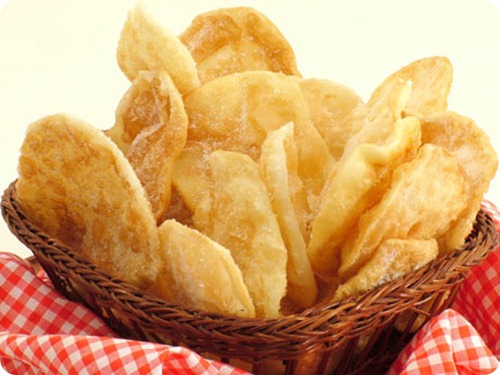
A classic snacks. Not only Spanish and Italian cuisine are present in Argentina, also the Germans with their Kreppel. The fried cakes, usually with some sugar, they are also ideal for "mateadas".
The fried cake is a typical snack Rio de la Plata, and later spread to other regions where it is known by other names and preparations (such as rogue or sopaipilla, which are also variants of donuts). Its mass is basically the common bread leavened with a shorter, basically consists of wheat flour, natural yeast activated with a little sugar and warm water or dry yeast and salt, hence there are different variants of aggregates as eggs, milk , sugar, shortening or fat, after fermentation the dough is stretched, it is cut to the desired shape and fat fried in vegetable oil vaccine or neutral. Once finished they can sprinkle with powdered sugar common or if you like sweets. Also you can do with baking soda but does not have the same taste with natural yeast or dry.
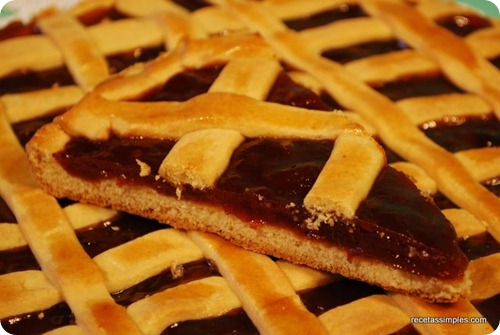
Pastafrola.
The most simple and classic cake. Usually quince, but there are sweet potato and caramel. It is decorated with strips of the same mass. It is an excellent companion to mate.
It is characterized by its soft texture and crisp, achieved through gluten and starch content in wheat flour. Their manufacture requires the use of soft butter, which is not thoroughly mixed with the flour: the gluten network can then be waterproof harden to baking.
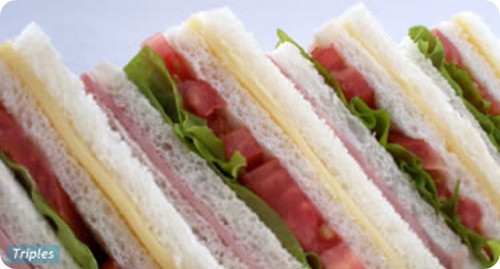
Sandwiches crumb. Unobtainable abroad Typical birthdays or snack, "Sanguchito crumb" are very hard to come out of Argentina. They can go almost stuffed everything from tomatoes and lettuce to ham and palmettos.
To prepare bread sandwiches of bread crumb Pads are stripped of their bark and cut into rectangles about 3 mm thick, 14 inches long and three inches wide. These slices of bread crumb are covers or walls of these sandwiches. A sandwich bread crumb simply consists of two caps which are placed between the other ingredients. A sandwich bread crumb triple (sometimes simply called triple) has a central slice produces two separated spaces in which different ingredients are sandwiched.
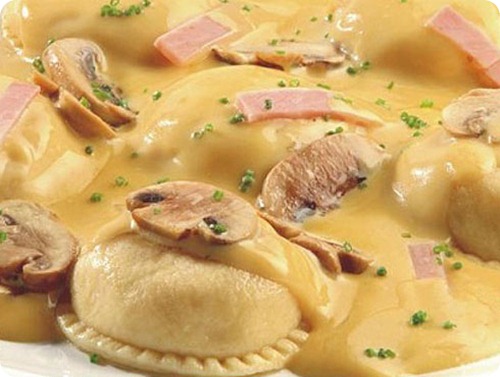
Sorrentinos.
Pasta to Argentina. Others who were born following a restaurant, Sorrento. When Argentine loves pasta and sorrentinos are favorite dishes. Larger than ravioli, usually of ricotta, ham and mozzarella.
The masses sorrentinos like all pasta dough can be made with or without eggs, all depends on individual taste. I do not find too many differences, maybe the color of the paste more or less yellow.

Neapolitan Milanese.
Despite its name, either Argentina. Not Milan or Naples. Its name comes from Buenos Aires restaurant Napoli and according to legend, was born burned trying to cover a Milanese. It usually has tomato sauce and mozzarella, but may include ham.
It is named for the city of Naples in Italy, but by Joseph Napoli Pizzeria Napoli, where it sold for the first time in Buenos Aires in the late 30s of the twentieth century. Milan was called to Napoli. The hotel was near the indoor stadium Luna Park, in the City of Buenos Aires.
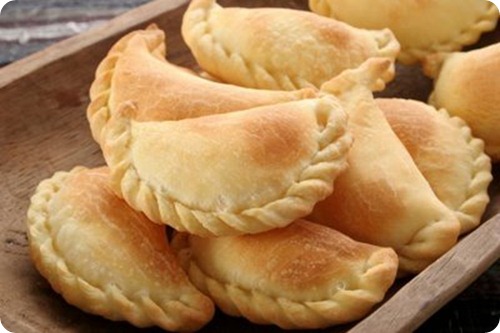
Empanadas,
All kinds of fillings. The most typical are in the northwest of the country, but throughout Argentina there are lots of flavors of pies, including caramel, quince or sweet potato. The most classic meat, and ham and cheese tamale.
The word empanada comes from the Castilian "breading" whose primary meaning is "locking something or bread dough in the oven to cook" one bread It was filled with meats or vegetables (or both) (in-panis, in -panata), the shepherds and travelers had to consume in the field. Over time, finished bread baking dough together with its filling, and later developed specific masses to wrap the filler. This type of preparation led to foods like Italian calzone, empanadas and Cornish pasties Galician British, perhaps in a similar way briks emerged Tunisians, börek Turks, or Sfihas Lahmayun Fatayer and Arabs.

Pizza.
A typical combination. "Moscato, Pizza and Faina" says a famous song. The sweet wine to accompany this tremendous combination to Italian: pizza and Faina (dough made with chickpea flour and olive oil).
The most accepted origin lies in ancient Italy, where he used a circular bread and, after cooked, cut into portions as in the current pizzas. Then it is possible to deduce that the origin of the pizza is due to the addition of extra ingredients on bread such as gouda cheese. The ancient Greek flat bread covered with oil, herbs and cheese. The Romans developed placenta, a flat bread topped with cheese and honey flavored with bay leaves. The modern pizza was developed by the seventeenth century in the city of Naples, where the first documentary references exist about the origins of a kind of pie with tomato. In 1889, cheese was added. It is said that in the time of King Ferdinand I (1751-1825), the queen had banned pizza at court. But Ferdinand, who was fascinated by disguising mocking plebeian order to secretly visit a slum in Naples where he prepared this meal. Eventually he confessed his taste and pizza became a great success throughout Italy.
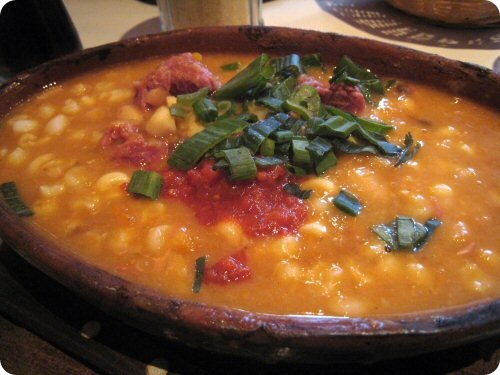
Locro. It is a thick stew with a backbone that is trodden white corn which is given a fairly long cooking.
The soup is one of the most typical dishes of Creole cuisine of the province of Tucumán. This nutritious and healthy dish is made with corn or wheat and dry beans. Allow to soak overnight, separately, the same amount of corn and porotossecos. Then boil in plenty of water and soft when you add salt to taste, pork and bacon bones. Let cook over low heat until boiling. At serving time you add a fried onion, garlic, peppers and tomatoes, colored with paprika and chili powder.
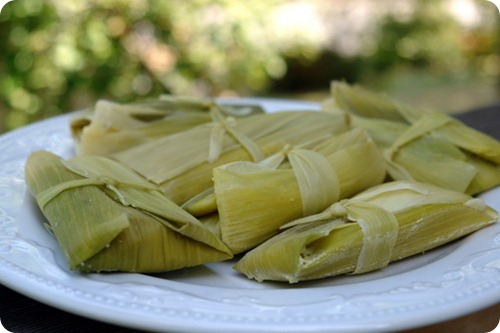
Humita.
Humitas or humintas (Quechua: jumint'a) are a food of Andean origin, are typical of Argentina, Bolivia, Chile, Ecuador and Peru.
It basically consists of a paste or lightly seasoned cornmeal, and finally wrapped baked or roasted in the leaves themselves (or panca chala) of a corncob. It should be noted that the word in Argentina humita is used to designate not only mass involved in the corn cob leaves but only to the mass of food, boiled and which generally is used for padding.
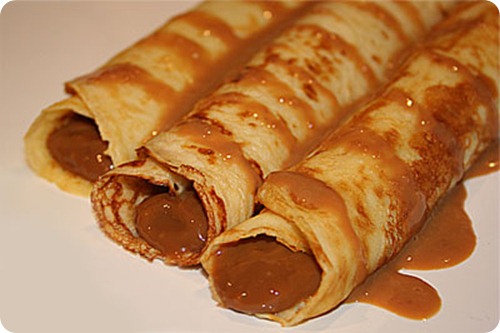
Pancakes.
A delicious sweet dessert, also called pancakes, big and small delight. Stuffed Crepes with Dulce de Leche.
The pancakes are very famous in Argentina, especially those filled with dulce de leche, is a typical dessert that appears in most of the letters of different restaurants. Some are somewhat drunks, they carry are served alcohol other glaze or dusted with powdered sugar, but all carry caramel and the sweet tooth the double ration demand.
If you liked this article, subscribe to the feed by clicking the image below to keep informed about new contents of the blog:

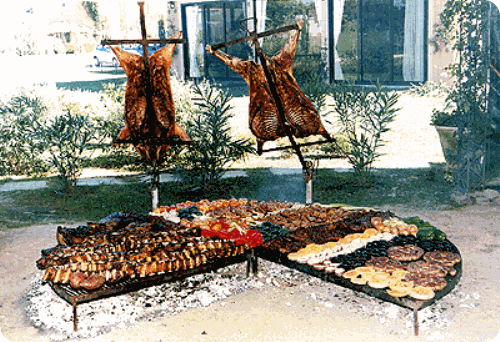
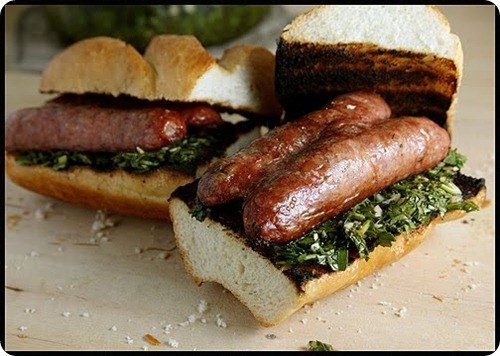











Comments
Post a Comment
Do not insert clickable links or your comment will be deleted. Check the Notify me notifications to be notified via email of new comments. If I helped you with the post or with the answers to the comments, share on Facebook or Twitter. Thank you.